 |
|
||||
| Previous | Gallery | Next |
 |
||||||
 |
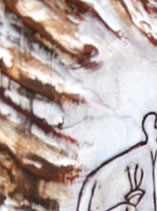 |
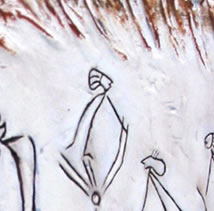 |
||||
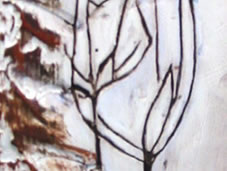 |
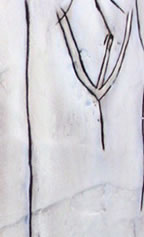 |
|||||
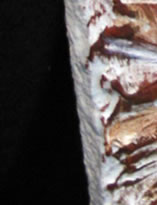 |
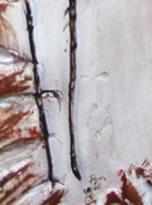 |
|||||
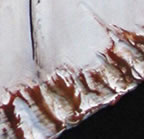 |
||||||
UBARR CEREMONY COLORS included in this piece give stark, striking contrast to the figures. They are red oxide, raw umber, black, dirt from Sedona , Arizona and turmeric. Turmeric is a spice that is widely used in religious rites in ancient India and China . It is also used in Hindu religious rituals in India and used as a dye for holy robes. Ayurvedic and Chinese medicines treat inflammation and digestive disorders with this spice. It has been harvested in India for more than 5000 years. BACKGROUND is eggshell. TEXTURING is smooth, accented by a very rough and jagged border, created by using knife-striking technique. SIZE is 12”H x 12”W CULTURAL INSPIRATION: Most of the Ubarr ceremonial grounds can be located along the northern edge of the Arnhem Land plateau. Ceremonies are an important part of Aboriginal society. They are practiced for the continuation of knowledge for their culture and society. Fortunately for posterity, some rock art pictures show details of ceremonial acts, rituals that no longer are practiced by the groups in whose clan they are located. The Ubarr myth has different meanings to the peoples of this region. Some believe that pairs of kangaroos, male and female, left their images on walls of local shelters. In the southernmost part of the plateau, which the Madjawarr and Murrwarn clans call home, they believe that Gandagidj and his wives settled here. Using white pigment, Gandagidj painted a large portrayal of himself so future generations would know what to do. Gandagidi image, the kangaroo ancestor that introduced the Aboriginal people to this rite can still be seen at the Roberrawogwog site. He is most often associated with the Antilopine Wallaroo. A hollowed out log drum is used in this ritual which is performed on sacred ground. The composition shows six male figures standing in forked trees. They are calling sacred invocations over the participants. The trees are most likely pandanus palms stripped of their leaves. Pandanus palms are hardy shrubs, often used in the bush for medicine and food. Its leaves are used for the weaving of baskets and mats and the oil of certain species for perfume. The location of this drawing is Ginga wardelirrhmeng.
|